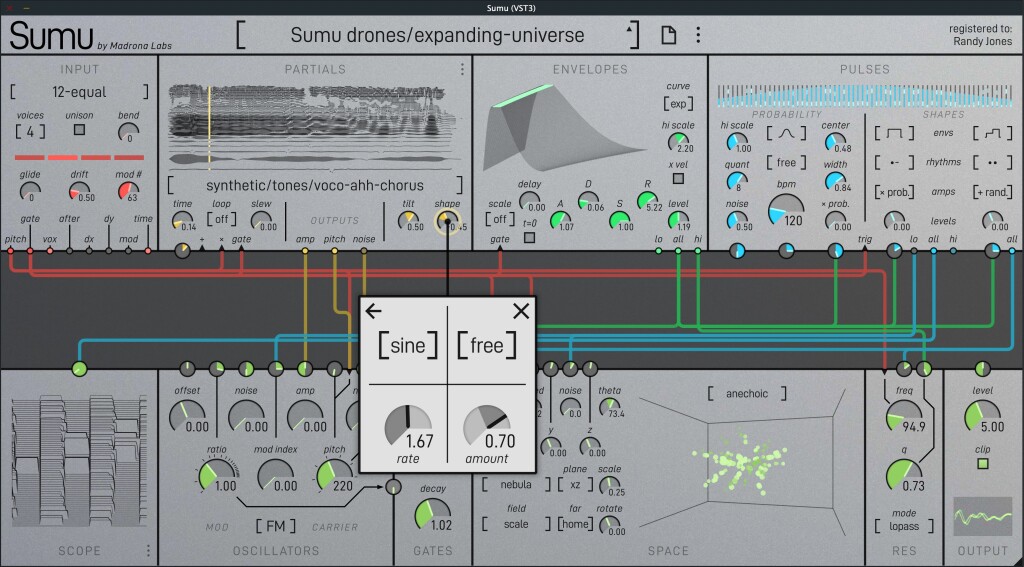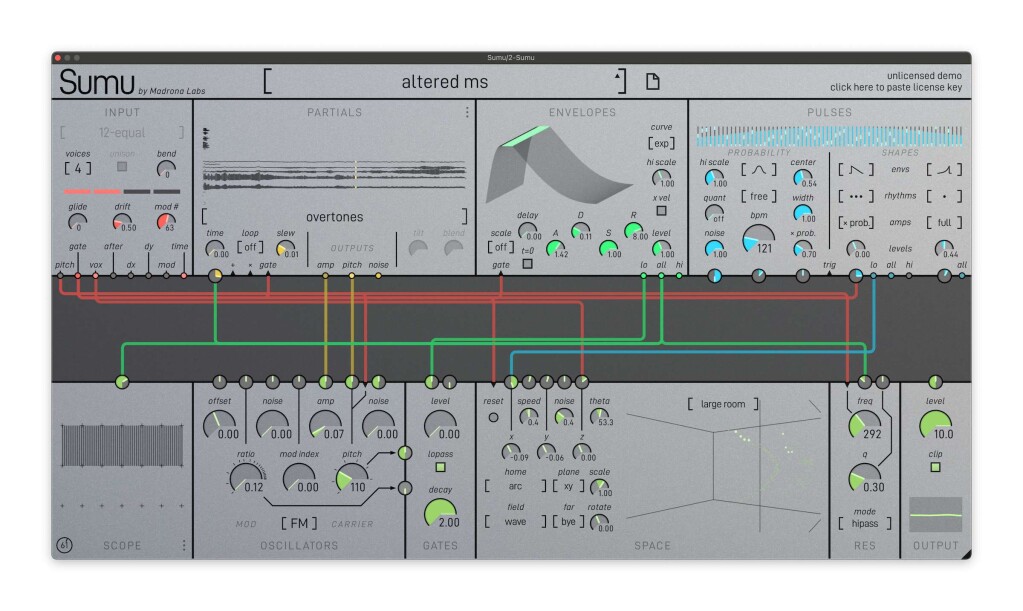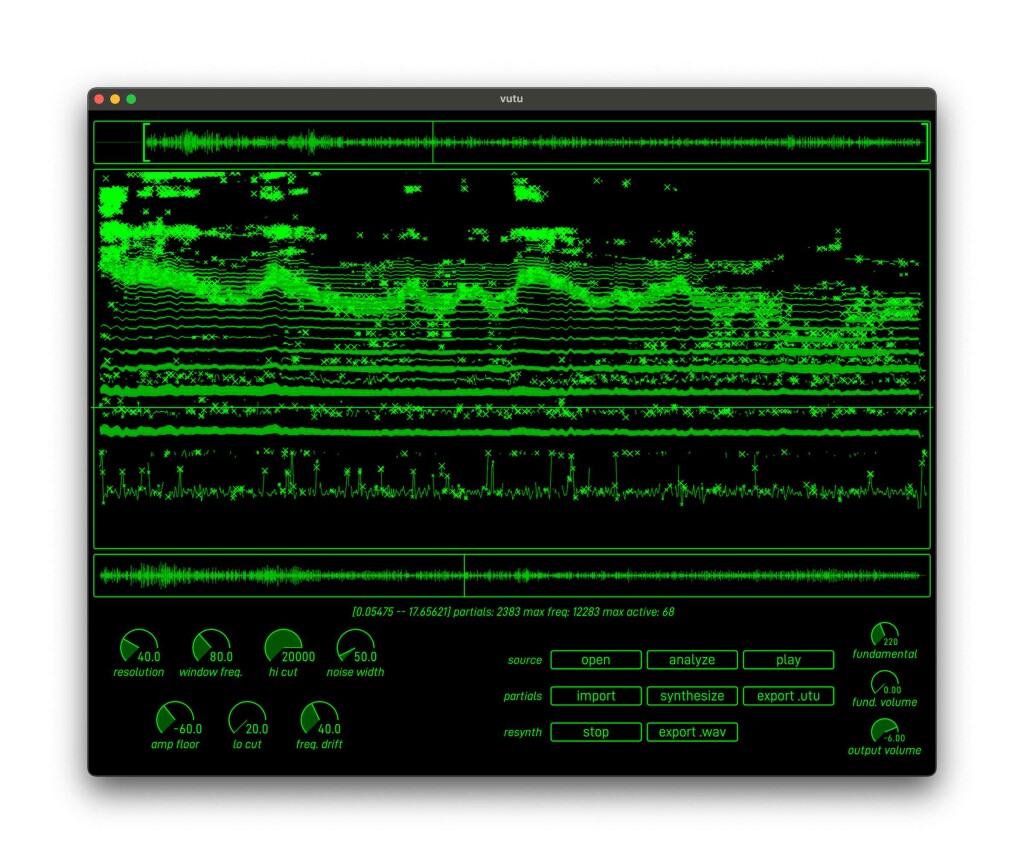Madrona Labs’ Sumu, after an extensive development and Early Access period, is now at version 1.0. It’s semi-modular, it’s an additive synth (with the ability to import your own partials), it does FM, it has a powerful fine-grained spatialization tool. It’s simply a spectral sound design and soundscape powerhouse.
Even if you know it from the last beta, it does a whole lot more now. As Madrona Labs’ Randy Jones points out to me, there’s now:

– partials: spectral tilt control
– partials: even / odd shape control
– input: unison w/ drift
– input: tunings menu
– popup LFOs for most dial params (right-cliick or click+hold)
– many new patches / samples
– hella stable
There are also new CPU optimizations. Randy says it’s still CPU intensive, though my M1 Pro had no issue with it across any of the presets.
I just grabbed that new version. I was already blown away with the pre-release, but I want to do a proper detailed review with the build that arrived today, so – sit tight. Let’s see how quickly I can describe what this is.

It maps partials. 64 partials with a 3D map visualization give you a uniquely powerful approach to additive synthesis. Pull up a partial preset (or your own analyzed partials), shape pitch, level, and noise envelopes, and you get a rich range of sounds, from percussive, edgy colors to rich timbres. If you hear “additive synthesis” and think “oh God horrible organ sounds and plastic-y synths,” just… forget that you’ve ever heard of additive synthesis. This is more like deep spectral reshaping, and it’s capable of sounds other synths could only dream of.
Seriously, just browse through the presets (or partial presets with the default) and start tweaking knobs. Even a single preset can go all sorts of directions.
You can analyze your own samples. The free companion Vutu app imports files, analyzes them, and outputs partials and parameters to resynthesize them in Sumu, with helpful visualization and tons to tweak. (You can also just dump files in there and go, which works well enough as you learn what the parameters do.)

Pulses, envelopes, and modulation animate the sounds. Pulses are hard to grok at first, but you get deep modulation options across frequency bands, on top of per-partial ADSR envelopes and grouped triggers and more.
Patch it for semi-modular possibilities. Drawing on other great Madrona Labs stuff like Aalto, there’s an intuitive visual patching interface with color-coded wires and amounts. It’ll be a boon to anyone coming from modular backgrounds (or Buchla, etc.), and it works perfectly with the modules here.
There’s a terrific architecture under the hood. 64 VCAs or (Buchla-style) Low Pass Gates, a modeled/nonlinear 24 db/octave Moog-inspired ladder filter (perfect for this context) with a little bit of overdrive for warmth, per-partial carrier-modulator pairs with noise – you just have a load of options here, but all presented in an extremely manageable interface.
Space: the final frontier. All of that is great, but then the thing that really shoots Sumu into new territory is the extraordinary spatialized, vector field motion with Doppler shift and reverberation models. You can vastly impact the sound with this and even complete whole pieces with this element.
Plus playability. MPE, MIDI learn, dedicated LFOs for most parameters (I was so lost I barely noticed that at first), alternative tunings (and with MPE you can add more). Note: MPE did not quite make the 1.0 cut but it’s coming in the next build. And Madrona Labs is qualified – they helped create the MPE spec.
VST3, AU, macOS, Windows. The free trial just has sporadic noise, which I found soothing as much as anything (before I found my license code), so you can give this a try.
US$129 intro price for a limited time.
https://madronalabs.com/products/sumu
More on how it works:
The sounds are just so good. I have a feeling this is going to be whole albums for me. More on this soon.